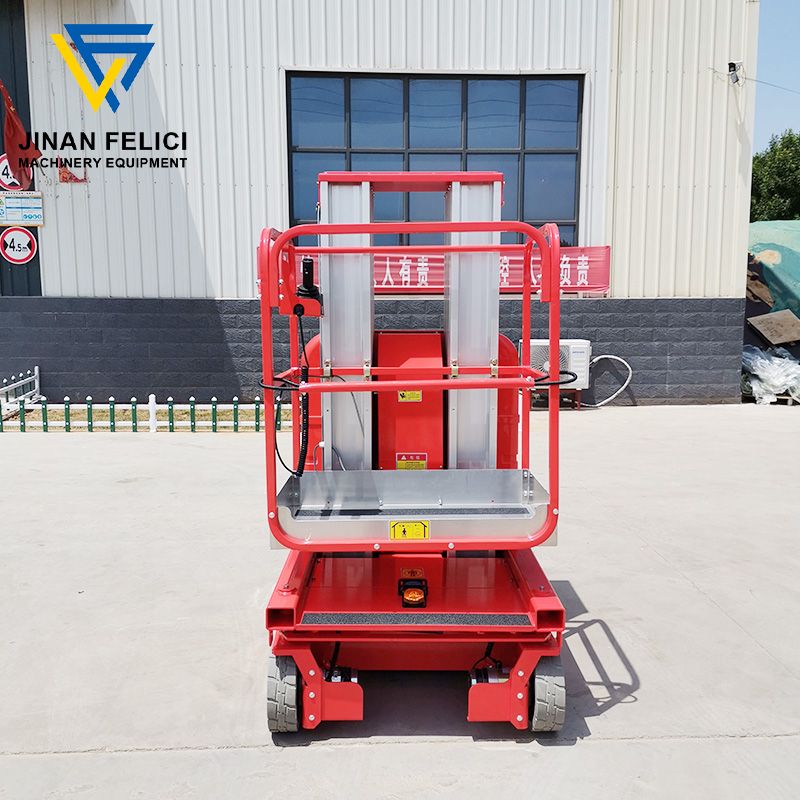In the construction industry, various types of equipment are used to facilitate work at heights. Two common types of equipment are AWP (Aerial Work Platform) and EWP (Elevating Work Platform). While these terms may sound similar, they refer to different types of machinery with distinct characteristics and applications. Understanding the difference between AWP and EWP is essential for professionals in the construction and maintenance fields. In this article, we will delve into the details of both AWP and EWP, exploring their definitions, features, and applications.
An Aerial Work Platform, often referred to as AWP, is a versatile piece of machinery designed to provide temporary access to elevated areas. AWPs are commonly used in construction, maintenance, and other industries that require working at heights. These platforms come in various forms, including scissor lifts, boom lifts, and personnel lifts.
Scissor lifts are a popular type of AWP. They consist of a platform supported by crossed, linked steel arms, which extend vertically to raise or lower the platform. Scissor lifts provide vertical movement and are ideal for tasks that require stability and a larger working platform. They are commonly used for installation, repair, and maintenance work.

Boom lifts, also known as cherry pickers, are another type of AWP. They feature a hydraulic arm, or boom, that extends outward and upward to reach elevated areas. Boom lifts provide horizontal and vertical movement, making them suitable for tasks that require access to difficult-to-reach areas. They are commonly used in construction, window cleaning, and film production.
Personnel lifts are compact AWPs designed for tasks that involve one or two workers. These lifts provide vertical movement and are highly maneuverable, allowing access to narrow spaces. Personnel lifts are often used in facilities management, inventory stocking, and electrical installations.
While AWP is a broad term that encompasses various types of equipment, EWP specifically refers to self-propelled or vehicle-mounted platforms used for working at heights. EWPs are commonly used in industries such as construction, maintenance, and utilities. They offer mobility and flexibility, enabling workers to access elevated areas more efficiently.
Self-propelled EWPs are standalone platforms equipped with their own power source. These platforms are highly versatile and can be driven and operated by a worker on the platform itself. Self-propelled EWPs come in different configurations, including scissor lifts, telescopic boom lifts, and articulating boom lifts. They are widely used for tasks that require frequent repositioning and maneuverability.
Vehicle-mounted EWPs are platforms mounted on trucks or vans, providing mobility and convenience. These platforms can be transported easily to different job sites, making them popular among contractors and maintenance crews. Vehicle-mounted EWPs come in various forms, such as telescopic boom lifts, articulating boom lifts, and aerial ladder trucks. They are commonly used for tasks that involve utility work, tree trimming, and exterior maintenance of buildings.
While AWP and EWP share the common goal of providing access to elevated areas, there are significant differences between the two. Understanding these differences is crucial when selecting the appropriate equipment for a specific job.
Design and Mobility: AWP encompasses a broader range of equipment, including scissor lifts, boom lifts, and personnel lifts. EWP, on the other hand, specifically refers to self-propelled or vehicle-mounted platforms designed for mobility and flexibility.
Power Source: Felici AWPs can have different power sources, including electric, hydraulic, or diesel. In contrast, EWP platforms are typically powered by their own engines or are vehicle-mounted.
Versatility and Range: AWPs are available in various configurations, offering versatility in terms of platform size, lifting capacity, and reach. EWP platforms are designed for mobility and can be driven or transported easily, providing a broader range of access to different locations.
Application and Industry: AWP equipment, such as scissor lifts and boom lifts, is commonly used in construction, maintenance, and other industries. EWP platforms, including self-propelled and vehicle-mounted options, are frequently employed in utility work, maintenance, and other mobile applications.
In summary, understanding the difference between AWP and EWP is essential for professionals who work at heights. While AWP is a general term that encompasses various types of elevated work platforms, EWP specifically refers to self-propelled or vehicle-mounted platforms designed for mobility. Both AWP and EWP serve the purpose of providing temporary access to elevated areas, but they differ in terms of design, mobility, power source, versatility, and application.
By choosing the right equipment for the job, construction and maintenance professionals can ensure the safety and efficiency of their operations. Whether it's an AWP like a scissor lift or a self-propelled EWP, each type of platform offers unique features and benefits that cater to specific requirements. Remember to assess the project needs carefully and consult industry guidelines to determine the most suitable platform for the task at hand.
312
0
2
All Comments (0)
If you are interested in sending in a Guest Blogger Submission,welcome to write for us!
Comments